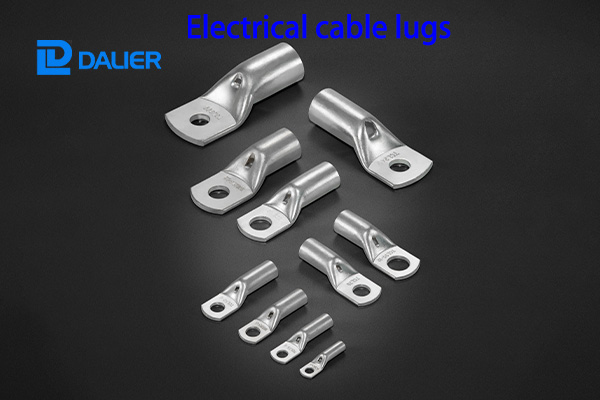A Comprehensive Guide to AC Contactors
AC contactors are essential electrical devices designed to control the flow of alternating current (AC) in an electrical circuit. They act as switches that can be activated remotely, making them crucial for motor control, lighting systems, and various industrial applications. Unlike manual switches, AC contactors enable automatic operation, allowing for efficient control and protection of electrical equipment. Their design focuses on handling high currents and repeated switching operations, making them a cornerstone in industrial automation and power distribution systems.
Working Principle of AC Contactors
The operation of an AC contactor is based on electromagnetic induction. Key components include:
1. Electromagnetic Coil: When an electrical current flows through the coil, it generates a magnetic field.
2. Armature: The magnetic field attracts the armature, which is connected to the contact mechanism.
3. Main Contacts: These are heavy-duty contacts that switch the main circuit on or off. When the armature moves, the main contacts close (or open), allowing (or interrupting) current flow.
4. Auxiliary Contacts: These provide feedback or control secondary circuits, often used for interlocking or signaling.
5. Arc Extinguishing System: Since high currents can create arcs when contacts open, AC contactors feature arc chutes or magnetic blowout coils to dissipate arcs safely.
When the coil is de-energized, a spring pushes the armature back, opening the main contacts and breaking the circuit. This design ensures reliable switching even under load.
Types of AC Contactors
AC contactors can be categorized based on several criteria:
1. By Pole Configuration
Single-Pole Contactors: Used for single-phase circuits (e.g., lighting systems).
Three-Pole Contactors: Common in three-phase motor control, suitable for industrial machinery.
Four-Pole Contactors: Include an additional pole for neutral or auxiliary functions.
2. By Arc Extinguishing Medium
Air Gap Contactors: Use air as the insulating medium, suitable for general applications.
Vacuum Contactors: Enclose contacts in a vacuum chamber, ideal for high-voltage or frequent switching (e.g., mining, power plants).
3. By Coil Voltage
AC-Coil Contactors: Most common, operated by AC voltage (e.g., 220V, 380V).
DC-Coil Contactors: Operated by DC voltage, used in specific applications like battery-powered systems.
4. By Application
General-Purpose Contactors: For standard motor control and lighting.
Heavy-Duty Contactors: Designed for harsh environments or high-duty cycles (e.g., steel mills, cement plants).
Key Applications of AC Contactors
AC contactors play a vital role in various industries:
Industrial Motor Control: Starting, stopping, and reversing three-phase motors in pumps, fans, and conveyor systems.
Building Automation: Controlling HVAC systems, elevators, and lighting panels.
Power Distribution: Switching circuits in distribution panels and substations.
Manufacturing Equipment: Presses, machine tools, and robotic systems.
Household Appliances: Large appliances like air conditioners, washing machines, and refrigerators.
Renewable Energy: Controlling inverters and battery charging systems in solar or wind setups.
How to Select an AC Contactor
Choosing the right AC contactor involves considering several factors:
1. Rated Voltage: Must match the circuit voltage (e.g., 230V AC for single-phase, 400V AC for three-phase).
2. Rated Current: Should exceed the maximum load current, with a safety margin (typically 25-50% higher for motors due to starting surges).
3. Coil Voltage: Match the control circuit voltage (e.g., 24V AC/DC, 110V AC, 220V AC).
4. Duty Cycle: Continuous Duty: For constant operation (e.g., pumps running 24/7). Intermittent Duty: For periodic on-off cycles (e.g., conveyor belts). Short-Time Duty: For brief operations (e.g., crane motors).
5. Enclosure Type: IP ratings for protection against dust, moisture, or hazardous environments.
6. Contact Material: Silver alloys for high conductivity and durability; gold plating for low-current signals.
7. Arc Extinguishing Capability: Higher currents require more robust arc chutes.
8. Standards Compliance: Ensure compliance with IEC, UL, or other regional standards.
Conclusion
AC contactors are indispensable in electrical systems, enabling safe and efficient control of high-current circuits. Understanding their working principle, types, and selection criteria is crucial for optimal performance. Regular maintenance and proper troubleshooting can extend their lifespan, while choosing the right contactor ensures reliable operation in diverse applications. As industrial automation evolves, energy-efficient and smart contactors are becoming increasingly popular, driving innovation in power control technology.
FAQ
Q1. What's the difference between an AC contactor and a relay?
Current Rating: Contactors handle higher currents (10A to thousands of amps), while relays typically manage lower currents (<10A).
Purpose: Contactors control main power circuits (e.g., motors), while relays often act as signal amplifiers in control circuits.
Structure: Contactors have larger contacts and arc extinguishing systems, whereas relays may lack these features.
Q2. Can an AC contactor be used for DC circuits?
No, unless specifically designed for DC. AC contactors are optimized for the alternating magnetic field of AC, while DC contactors have different coil designs and arc suppression to handle steady DC current. Using an AC contactor for DC can cause overheating, contact welding, or failure.
Q3. How do I troubleshoot a contactor that won't close?
Check coil voltage supply and connections for breaks or loose wires.
Inspect the coil for burnout (test with an ohmmeter).
Look for mechanical obstructions in the armature or contact mechanism.
Verify that auxiliary contacts are properly aligned and not stuck open.




